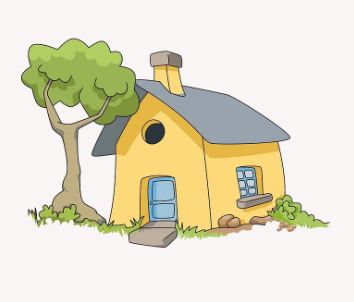Exploring Eco-friendly Kithomes

In recent years, there has been a growing interest in eco-friendly kithomes as a sustainable and environmentally conscious housing solution. As the world faces increasing environmental challenges, more people are seeking ways to reduce their carbon footprint and live in harmony with nature. Eco-friendly kithomes offer a compelling option, combining modern design with green building principles. This web page aims to explore the concept of eco-friendly kithomes, highlighting their benefits, design considerations, and the eco-conscious building materials used in their construction.
The Rise of Eco-Friendly Kit Homes
Eco-friendly kit homes have gained popularity for several reasons. First and foremost, they contribute significantly to reducing the overall environmental impact of the construction process. By utilizing sustainable materials and green building techniques, these homes minimize resource consumption and waste generation, making them a more environmentally responsible choice compared to traditional housing options.
Benefits of Eco-Friendly Kit Homes
- Sustainability: Eco-friendly kithomes are designed with sustainability in mind. They often incorporate renewable resources, such as responsibly harvested timber, bamboo, or recycled materials, reducing the demand for virgin resources and minimizing environmental degradation.
- Energy Efficiency: Green building principles emphasize energy efficiency. Eco-friendly kit homes are well-insulated, equipped with energy-efficient windows, and often include solar panels or other renewable energy systems, reducing their reliance on non-renewable energy sources and lowering utility bills.
- Reduced Carbon Footprint: The use of eco-conscious building materials and sustainable construction practices significantly reduces the carbon footprint of eco-friendly kithomes. By choosing greener options, homeowners can make a positive impact on the environment.
- Healthier Living Spaces: Eco-friendly kithomes prioritise indoor air quality by using low VOC paints, natural ventilation, and non-toxic building materials. This results in healthier living spaces for occupants, reducing the risk of respiratory issues and other health problems.
- Cost-Effectiveness: While some eco-friendly materials may have a higher initial cost, they often lead to long-term cost savings through reduced energy bills and lower maintenance expenses.
Design Considerations for Eco-Friendly Kithomes
Designing an eco-friendly kit home involves thoughtful planning and consideration of various factors:
- Passive Solar Design: Orienting the home to optimize natural light and passive solar heating can minimize the need for artificial lighting and heating, reducing energy consumption.
- Optimal Insulation: Proper insulation helps maintain a comfortable indoor temperature, reducing the reliance on heating and cooling systems and cutting down on energy use.
- Rainwater Harvesting: Integrating rainwater harvesting systems can provide a sustainable water source for landscaping and other non-potable uses.
- Energy-Efficient Appliances: Choosing energy-efficient appliances and lighting fixtures further reduces energy consumption and promotes sustainable living.
- Green Roofing: Green roofs, covered with vegetation, provide insulation and absorb rainwater, reducing stormwater runoff and improving energy efficiency.
- Recycled and Upcycled Materials: Utilizing recycled or upcycled materials for construction and interior design adds a unique character to the home while reducing waste.
- Natural Ventilation: Incorporating windows and vents strategically to encourage natural airflow can reduce the need for mechanical ventilation and air conditioning.
Eco-friendly kithomes rely on a range of sustainable and eco-conscious building materials, including:
- Sustainably Sourced Timber: Timber from responsibly managed forests ensures that the ecosystem is not harmed during harvesting.
- Bamboo: A rapidly renewable resource, bamboo is durable and can be used for various purposes in eco-friendly kit homes.
- Recycled Steel: Using recycled steel for structural components reduces the need for new metal production and saves energy.
- Straw Bale: An excellent natural insulator, straw bales can be used in wall construction, promoting energy efficiency.
- Recycled Glass: Glass made from recycled materials can be used for windows and countertops, reducing waste.
- Natural Plasters and Paints: Non-toxic plasters and paints made from natural materials ensure healthier indoor air quality.
Eco-friendly kithomes present a promising solution for environmentally conscious individuals seeking sustainable living options. Their focus on green building principles, energy efficiency, and eco-conscious materials makes them an attractive choice for those looking to reduce their environmental impact while enjoying a comfortable and modern home. By embracing eco-friendly kithomes, we can move closer to a more sustainable and environmentally responsible future. Consider exploring the possibilities of eco-friendly kit homes for your next housing project and make a positive impact on the planet while creating a beautiful, harmonious living space for you and your family.
Go back to Sustainable house design
Or return to the homepage
Your second block of text...




